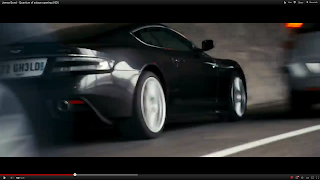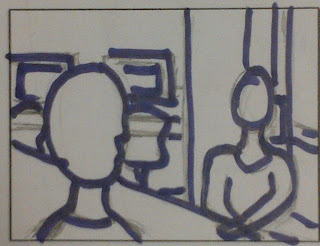BBFC - Film Classification Analysis
Films what are about to go on theatrical release are classified by two examiners using the BBFC. The examiner will always look at issues involving sex, nudity, horror, drugs, discrimination, behaviour, violence, language etc, when making decisions. They also have to consider the impact the film will make the audience/viewer feel.
Universal 'U' - Suitable for all.
A 'U' film should be suitable for audiences aged four years and over. There will never be anything like the use of
drugs or discriminatory language without clearly showing the younger viewer that is disapproved of. The outcome
of horror/violence should be very mild and not cause anxiety to young children. Also the outcome should be reassuring. Lastly, sexual activity must be very mild e.g. kissing etc.
Parental Guidance 'PG' - General viewing, but some scenes may be unsuitable for young children.
A ‘PG’ film should not disturb a child aged around eight or older. However, parents are advised to consider whether the content may upset younger or more sensitive children. Just as the same as U discrimination and drug use can be shown unless disproved of or in an educational or historical context. Horror and violence sequences must not be intense or continue for a long amount of time. A 'PG' can have mild bad language only and natural nudity with no sexual context. With sexual activity it should be very discreet and mild references and innuendos only.
Suitable for 12 years and over – ‘12’ or ‘12A’
Exactly the same criteria are used to classify works at ‘12A’ and ‘12’. It informs that these categories may upset children under 12 or contain material which many parents will find unsuitable for them.
The ‘12A’ category exists only for cinema films. Also, no one younger than the age of 12 may see a ‘12A’ film in a cinema unless accompanied by an adult. If an adult believes their child is suitable to watch a ’12A’ they can in their company. ‘12’ category only exists for Video or DVDs.
Use of drugs should not be glamorised or give instructional detail. ‘12’s’ may allow moderate physical and psychological threat, however should not be sustained. Dangerous behaviour (for example, hanging, suicide and self-harming) should not be created in great detail in which the child can copy. Moderate language is allowed, however, the use of strong language like the word f*** must not be frequent. Lastly, nudity is allowed but must be discreet and sexual activity may be briefly portrayed.
Suitable only for 15 years and over – ‘15’
No one younger than 15 may see a ‘15’ film in a cinema. No one younger than 15 may rent or buy a ‘15’ rated video work.
In ‘15’ films although drug taking can be shown, the film as a whole must not promote or endorse drug misuse. Horror with strong threat are permitted but must not be sadistic or sexualised. You can have a frequent use of strong language and the strongest terms (for example the word C***) can be used only if it is justified. Sex or sexual activity may be portrayed without strong detail. There can be strong verbal innuendos and references to sexual behaviour. Finally, violence can be strong but should not dwell on the infliction of pain/injury. Really strong gory images are unlikely to be acceptable.
Suitable only for adults – ‘18’
No-one younger than 18 may see an ‘18’ film in a cinema and no-one younger than 18 may rent or buy an ‘18’ rated video. Everything in an ‘18’ can be permitted however, typical reasons for restricting films to the 18 certificate category have included scenes of hard drug use, supernatural horror, explicit sex, sadistic violence and sexual violence.



































